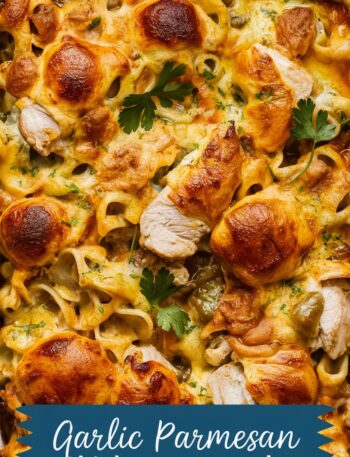There are few dishes as comforting and universally loved as Cheesy Garlic Scalloped Potatoes. With their rich, creamy layers of tender potatoes, infused with garlic and smothered in melted cheese, this casserole has become a timeless favorite for both family dinners and festive occasions. The enticing aroma alone can bring everyone to the table, while the golden crust promises a bite of indulgence that pairs beautifully with almost any main course.
In this ultimate guide, we’ll explore everything you need to know about this classic side dish—from its history and variations to a detailed cooking method, tips, and common mistakes to avoid. Whether you’re preparing it for Thanksgiving, Christmas, Easter, or simply a cozy weeknight dinner, these scalloped potatoes will be the star of your table.
What Are Scalloped Potatoes?
Scalloped potatoes are a baked potato casserole made by layering thinly sliced potatoes with a creamy sauce, seasonings, and (in modern recipes) cheese. While the traditional “scalloped” version didn’t originally include cheese, many contemporary variations do—bringing them closer to potatoes au gratin, which are cheese-heavy by design.
The name “scalloped” comes from the old English word collop, meaning “to slice thinly.” Over centuries, the dish evolved across cultures, taking on regional twists with different cheeses, herbs, and even added proteins.
Today, cheesy garlic scalloped potatoes have become the gold standard—rich, savory, and indulgent, with the irresistible pairing of garlic and cheese elevating the humble potato into something extraordinary.
Why This Dish Is So Popular
- Comfort Food Appeal: Creamy, cheesy, and filling—it’s the kind of dish that warms both body and soul.
- Versatility: Works as a side dish for roasted meats, grilled seafood, or vegetarian mains, yet it’s hearty enough to serve as a standalone meal.
- Make-Ahead Friendly: Can be assembled ahead of time and baked before serving, making it ideal for holidays and large gatherings.
- Customizable: Add vegetables, spices, or proteins to make it your own without losing the essence of the dish.
Health and Nutrition Insights
Although scalloped potatoes lean toward indulgence, they do offer some nutritional benefits:
- Potatoes are rich in potassium, vitamin C, and fiber.
- Garlic provides antioxidants and has immune-boosting properties.
- Cheese contributes protein and calcium but also adds fat and calories.
- Cream and butter enhance richness but should be consumed in moderation.
👉 For a lighter version, you can use low-fat milk, reduced-fat cheese, or even substitute part of the cream with broth or Greek yogurt.
Choosing the Right Potatoes
The type of potato you use makes or breaks this dish:
- Russet Potatoes (Best Choice): High starch content helps thicken the sauce naturally, ensuring creamy layers.
- Yukon Gold Potatoes: Slightly waxier, buttery in flavor, and hold their shape beautifully.
- Red Potatoes: Less ideal, as they are too waxy and don’t absorb flavors as well.
For best results, slice the potatoes thinly and evenly (about ⅛-inch thick). A mandoline slicer is perfect for this task.
The Role of Garlic in Flavor
Garlic is what transforms ordinary scalloped potatoes into a gourmet dish. When sautéed gently, garlic releases its sweetness and aroma, blending harmoniously with onions, cream, and cheese. Too much raw garlic can overpower the dish, so balance is key. Roasted garlic can also be used for a milder, nuttier depth of flavor.
Cheese Selection: Building the Perfect Blend
Cheese is the soul of this recipe. The key is to use a blend of cheeses for depth of flavor and the perfect melt:
- Cheddar Cheese: Sharp and tangy, melts into a creamy sauce.
- Parmesan Cheese: Nutty and salty, adds umami and a golden crust.
- Pepper Jack or Mozzarella: Pepper Jack adds spice, while mozzarella gives a stretchy melt.
Always use freshly grated cheese—pre-shredded varieties contain anti-caking agents that prevent smooth melting.
The Creamy Base
The sauce for scalloped potatoes is typically a béchamel-inspired mixture of butter, flour, and cream (a roux). This creates the rich, velvety texture that coats the potatoes. A touch of sour cream or broth can add tang and balance the richness.
Step-by-Step Recipe
Ingredients
- 3 pounds russet potatoes, peeled and thinly sliced
- 1 medium onion, finely chopped
- 4 cloves garlic, minced
- 4 tbsp unsalted butter
- ¼ cup all-purpose flour
- 2 cups heavy cream
- 1 cup vegetable or chicken broth
- 1 cup sour cream (optional, for tang)
- 2 cups sharp cheddar cheese, grated
- 1 cup pepper jack or mozzarella, grated
- ½ cup Parmesan cheese, grated
- Salt and black pepper, to taste
- 1 tsp paprika or cayenne (optional, for mild heat)
- Fresh parsley or chives, for garnish
Directions
1. Preparation
- Preheat oven to 400°F (200°C).
- Grease a large baking dish with butter or non-stick spray.
2. Make the Sauce
- Melt butter in a saucepan. Add onions and garlic, sauté until fragrant.
- Whisk in flour to form a roux. Cook for 1–2 minutes.
- Gradually add broth and cream, whisking to avoid lumps.
- Simmer until thickened. Stir in half of the cheddar and pepper jack cheese. Season with salt, pepper, and paprika.
3. Layer the Potatoes
- Place one-third of the sliced potatoes in the dish.
- Spread sauce evenly, then sprinkle with cheese.
- Repeat until all layers are complete, finishing with sauce and cheese on top.
4. Bake
- Cover with foil and bake for 1 hour.
- Remove foil and bake an additional 20–25 minutes until golden brown and bubbly.
- Rest for 15 minutes before serving.
Tips for Perfect Results
- Uniform Slices: Thin, even slices ensure even cooking.
- Don’t Rush Baking: Undercooked potatoes can ruin the dish; allow full baking time.
- Rest Before Serving: Letting it sit prevents the layers from falling apart.
- Cheese Balance: Use a mix of cheeses instead of relying on one type.
Serving Suggestions
- With roasted chicken, turkey, or ham for festive meals.
- As a side to grilled salmon or steak.
- With a fresh green salad to balance richness.
- As a vegetarian main dish with added mushrooms or spinach.
Creative Variations
- With Meat: Add diced ham, crumbled bacon, or shredded chicken.
- Vegetable Twist: Layer in spinach, mushrooms, or zucchini.
- Spicy Kick: Use jalapeños, chili flakes, or spicy cheeses.
- Gluten-Free: Replace flour with cornstarch.
- Dairy-Free: Use plant-based cream and vegan cheeses.
Common Problems and Fixes
- Watery Potatoes: Caused by not baking long enough or using waxy potatoes. Fix: Use russets and bake fully.
- Curdled Sauce: Happens if cream is boiled too hard. Fix: Simmer gently.
- Cheese Clumping: Pre-shredded cheese causes this. Fix: Use freshly grated cheese.
- Potatoes Too Hard: Means slices were too thick or dish was underbaked. Fix: Slice thinner and bake longer.
Frequently Asked Questions (FAQs)
Q1: Can scalloped potatoes be made ahead of time?
Yes. Assemble up to 24 hours in advance, cover tightly, and refrigerate. Bake just before serving.
Q2: Can I freeze scalloped potatoes?
Yes, but freezing before baking is better. Fully cooked scalloped potatoes may become grainy when reheated.
Q3: How do I reheat leftovers?
Cover with foil and warm in the oven at 350°F until heated through.
Q4: What’s the difference between scalloped potatoes and au gratin potatoes?
Traditional scalloped potatoes don’t always include cheese, while au gratin always does. Modern recipes often overlap.
Q5: How can I make it healthier?
Use milk instead of cream, reduce cheese, or add vegetables for balance.
Final Thoughts
Cheesy garlic scalloped potatoes are the kind of dish that never fails to impress. They’re rich, flavorful, and deeply satisfying—perfect for holidays, potlucks, or weeknight indulgence. With the right choice of potatoes, careful layering, and balanced seasoning, you’ll create a dish that’s golden, bubbling, and irresistible every single time.
This versatile casserole can be adapted endlessly—whether you’re keeping it classic, adding vegetables, or making it gluten-free. Once you’ve mastered the basics, you’ll find yourself returning to this recipe time and again.





